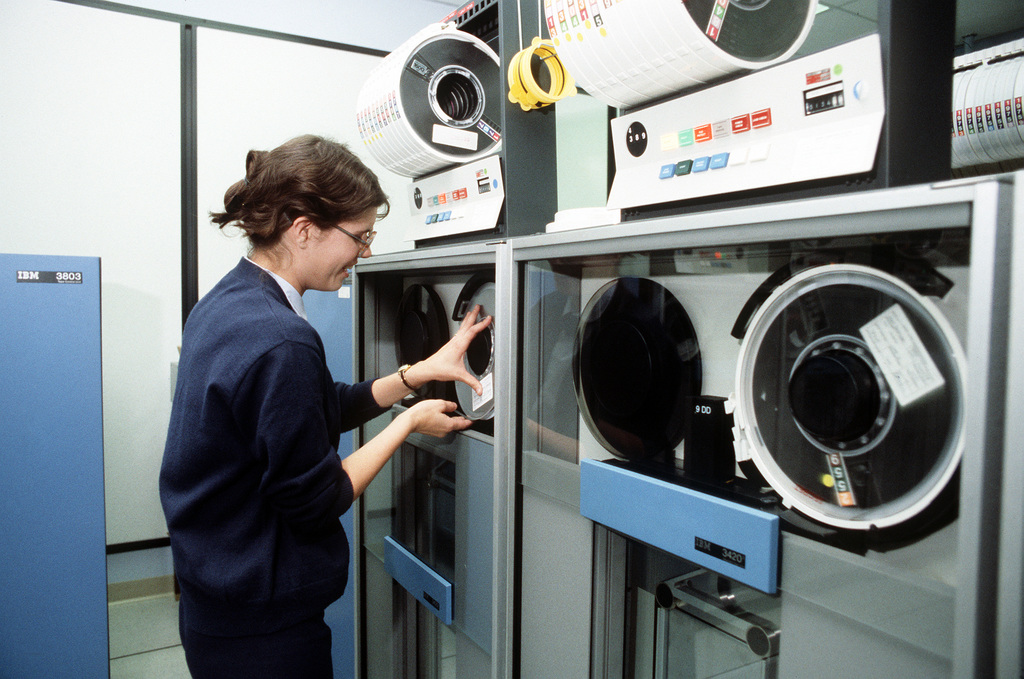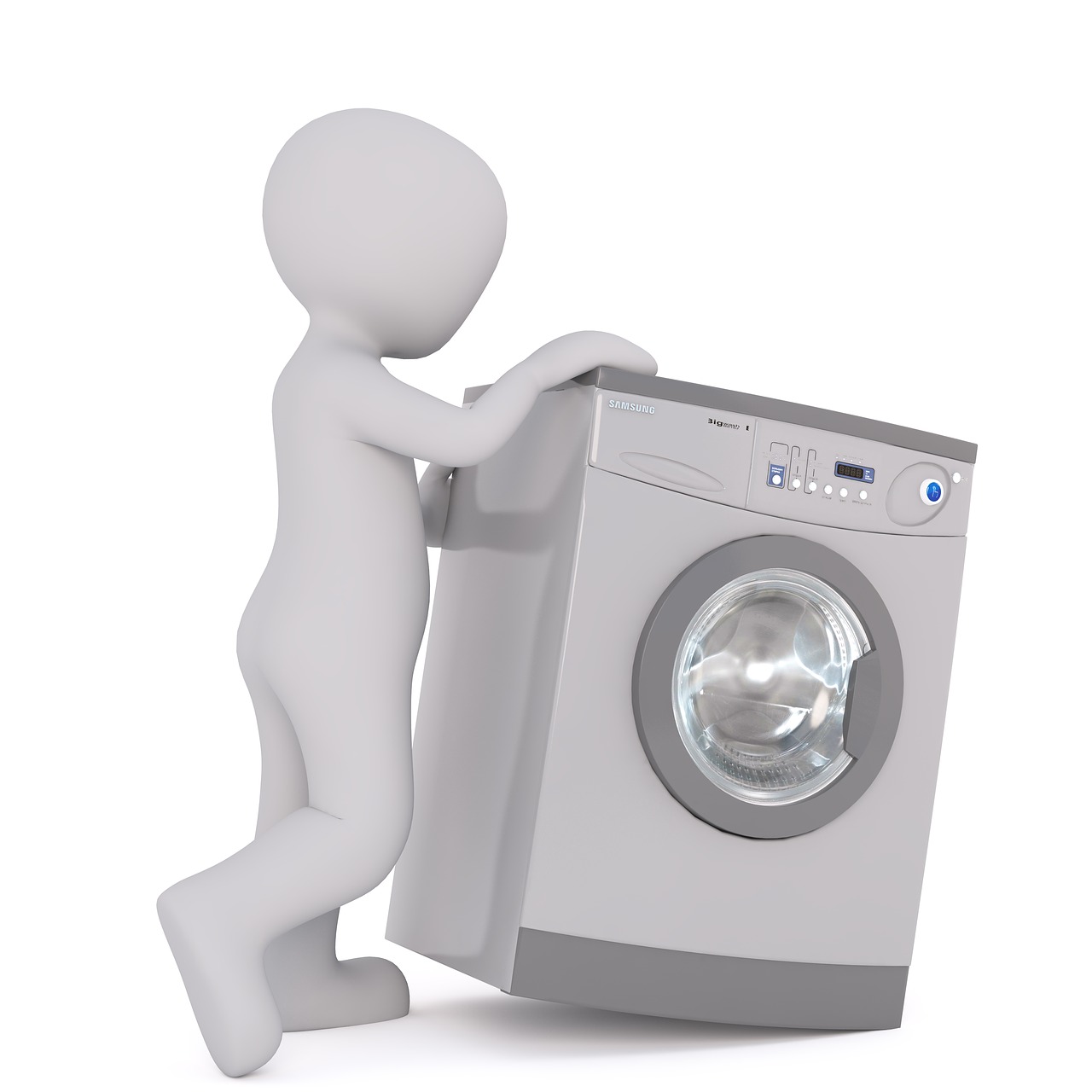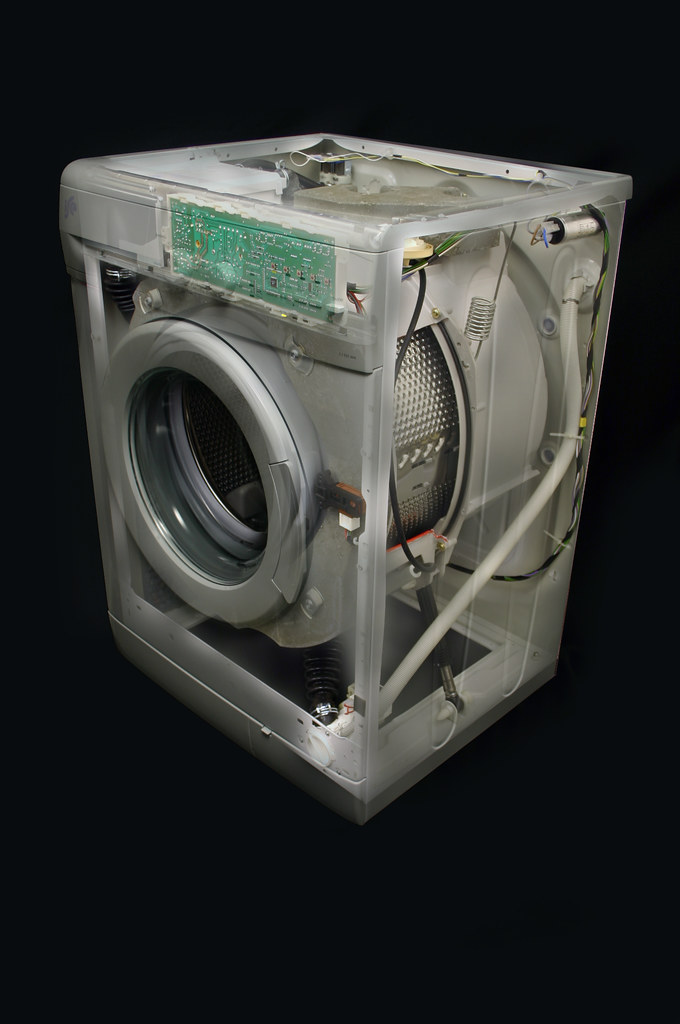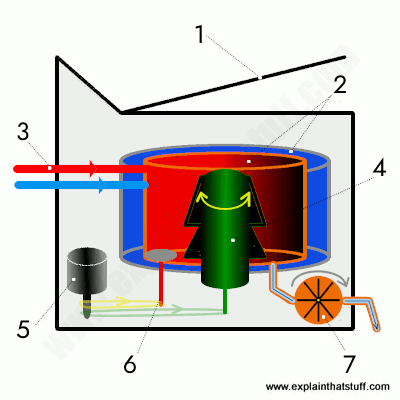Introduction
Background information on washing machine companies and repair technicians
Washing machines have become an essential appliance in households around the world. With the increasing demand for these appliances, numerous companies have entered the market, offering a wide range of options to consumers. However, not all washing machine companies provide the same level of service guarantees and warranties. It is important for consumers to have background information on these companies and repair technicians to make informed decisions when purchasing or repairing their washing machines. By understanding the reputation and track record of these companies and technicians, consumers can ensure that they receive the best service and support for their appliances.Importance of service guarantees and warranties
Service guarantees and warranties play a crucial role when it comes to choosing a washing machine company or repair technician. They provide assurance and peace of mind to the customers that their investment is protected and that they will receive quality service. Service guarantees ensure that any issues or problems with the washing machine will be addressed promptly and effectively. On the other hand, warranties provide coverage for any potential damages or defects in the machine, giving customers the confidence that they will not incur additional expenses in case of any unforeseen issues. Overall, the importance of service guarantees and warranties cannot be overstated, as they not only protect the customers’ interests but also reflect the reliability and commitment of the company or technician.Purpose of the article
The purpose of this article is to compare the service guarantees and warranties provided by different washing machine companies and repair technicians. With the increasing demand for washing machines and the complexity of their technology, it is crucial for consumers to understand the level of protection and support they can expect from the manufacturers and service providers. By analyzing and comparing the service guarantees and warranties, this article aims to help consumers make informed decisions when purchasing a washing machine or seeking repair services.Service Guarantees

Definition and explanation of service guarantees
A service guarantee is a promise made by a company or repair technician to the customer regarding the quality and reliability of their services. It provides assurance that if the customer is not satisfied with the service provided, the company or technician will take necessary actions to rectify the issue or provide compensation. Service guarantees are important as they instill confidence in the customer and demonstrate the commitment of the company or technician to deliver satisfactory results. In the context of washing machine companies and repair technicians, service guarantees can include guarantees on the durability of repairs, response time for service requests, and overall customer satisfaction. By offering service guarantees, companies and technicians differentiate themselves from their competitors and build trust with their customers.Types of service guarantees offered by washing machine companies
When it comes to service guarantees offered by washing machine companies, there are several types to consider. One common type is the guarantee of free repairs or replacements within a certain time frame, usually a year or two. This provides peace of mind to customers knowing that if their washing machine malfunctions or breaks down, they can get it fixed or replaced without any additional cost. Another type of service guarantee is the guarantee of timely service. This means that the company promises to provide prompt and efficient repairs, ensuring minimal disruption to the customer’s daily routine. Additionally, some washing machine companies offer extended warranties, which provide coverage beyond the standard warranty period. These extended warranties can give customers extra protection and reassurance. Overall, the types of service guarantees offered by washing machine companies aim to provide customers with reliable and convenient solutions for any issues that may arise with their appliances.Benefits of service guarantees for customers
Service guarantees provide numerous benefits for customers. Firstly, they offer peace of mind by ensuring that the customer’s investment in a washing machine or repair service is protected. If any issues arise during the guarantee period, the customer can rely on the company or technician to rectify the problem without incurring additional costs. Secondly, service guarantees enhance customer satisfaction by demonstrating the company’s confidence in the quality of their products or services. This gives customers the assurance that they are receiving reliable and durable solutions. Additionally, service guarantees can also save customers money in the long run. By choosing a company or technician that offers a comprehensive guarantee, customers can avoid expensive repairs or replacements in the future. Overall, service guarantees provide customers with confidence, satisfaction, and financial protection, making them an essential consideration when choosing a washing machine company or repair technician.Warranties

Definition and explanation of warranties
In the context of washing machines, warranties refer to the promises made by the companies and repair technicians regarding the quality and durability of their products and services. These warranties typically outline the specific guarantees provided, such as free repairs or replacements within a certain time frame, and any conditions or limitations that may apply. The purpose of warranties is to provide consumers with assurance and protection, ensuring that they receive satisfactory performance and value from their washing machine purchases. Understanding the different types of warranties offered by washing machine companies and repair technicians is crucial in making informed decisions and maximizing the benefits of these service guarantees.Types of warranties offered by washing machine companies
When it comes to warranties offered by washing machine companies, there are several types to consider. One common type is the manufacturer’s warranty, which typically covers any defects or malfunctions that occur within a certain period of time after purchase. Another type is the extended warranty, which can be purchased separately and provides additional coverage beyond the manufacturer’s warranty. Some companies also offer a limited warranty, which may have certain restrictions or exclusions. Additionally, there are warranties that cover specific components or parts of the washing machine, such as the motor or drum. It is important for consumers to carefully review the terms and conditions of each warranty before making a decision.Comparison of warranties provided by different companies
When comparing the warranties provided by different companies in the washing machine industry, it is important to consider various factors. One key factor to consider is the duration of the warranty. Some companies offer a limited warranty that covers only certain parts for a specific period of time, while others offer a more comprehensive warranty that covers a wider range of issues for a longer duration. Another factor to consider is the coverage provided by the warranty. Some companies may offer a warranty that only covers manufacturing defects, while others may provide coverage for accidental damage or wear and tear. Additionally, it is important to evaluate the terms and conditions of the warranty, such as any exclusions or limitations. By carefully comparing the warranties provided by different companies, consumers can make an informed decision and choose the best option that suits their needs and preferences.Service Guarantees vs Warranties

Differences between service guarantees and warranties
Service guarantees and warranties are two terms often used interchangeably, but they have distinct differences. A service guarantee is a promise made by a company or technician to provide a certain level of service or satisfaction. It typically outlines what the company will do if the customer is not satisfied with the service provided. On the other hand, a warranty is a legally binding agreement that ensures the repair or replacement of a product if it malfunctions within a specified period. While both service guarantees and warranties aim to provide customer satisfaction, the main difference lies in their scope and legal implications. Service guarantees are more focused on the quality of service, while warranties primarily cover the functionality and durability of the product. It is important for consumers to understand these differences when evaluating the service guarantees and warranties offered by washing machine companies and repair technicians.Pros and cons of service guarantees
Service guarantees offered by washing machine companies and repair technicians have both pros and cons. On the positive side, service guarantees provide customers with peace of mind knowing that if something goes wrong with their washing machine, they will be covered. This can save customers from expensive repair costs and give them confidence in the quality of the service provided. Additionally, service guarantees can also incentivize companies and technicians to provide high-quality service, as their reputation and customer satisfaction are at stake. However, there are also some drawbacks to service guarantees. Some companies may offer limited coverage or have strict conditions that make it difficult for customers to claim their guarantee. It is important for customers to carefully read and understand the terms and conditions of the service guarantee before making a decision. Overall, service guarantees can be beneficial for customers, but it is important to weigh the pros and cons before relying solely on them.Pros and cons of warranties
When it comes to warranties, there are both pros and cons to consider. On the positive side, warranties provide peace of mind to consumers, knowing that they are protected against any potential defects or malfunctions in their washing machines. Warranties also often cover the cost of repairs or replacements, saving customers money in the long run. Additionally, some warranties offer extended coverage, giving consumers added protection beyond the standard warranty period. However, there are also downsides to warranties. Some warranties may have limited coverage or exclude certain types of damage, leaving consumers responsible for repair costs. Warranties may also have strict conditions or require regular maintenance, which can be inconvenient for some users. It is important for consumers to carefully review the terms and conditions of warranties before making a purchasing decision.Choosing the Right Service

Factors to consider when comparing service guarantees and warranties
When comparing service guarantees and warranties offered by washing machine companies and repair technicians, there are several factors to consider. Firstly, it is important to assess the duration of the guarantee or warranty. Some companies may offer a longer duration, providing peace of mind for a longer period of time. Secondly, consider the coverage provided by the guarantee or warranty. Does it cover only specific parts or does it include comprehensive coverage for all major components? Additionally, it is essential to evaluate the terms and conditions of the guarantee or warranty. Are there any restrictions or limitations that may affect the validity or extent of the coverage? Lastly, take into account the reputation and reliability of the company or technician offering the guarantee or warranty. It is crucial to choose a reputable and trustworthy provider to ensure that any potential issues will be resolved efficiently and effectively. By considering these factors, you can make an informed decision when comparing service guarantees and warranties for your washing machine.Tips for selecting a reliable washing machine company or repair technician
When selecting a reliable washing machine company or repair technician, there are several tips to keep in mind. Firstly, it is important to do thorough research on the reputation and customer reviews of the company or technician. Reading feedback from previous customers can give valuable insights into the quality of their services. Additionally, it is advisable to choose a company or technician that is certified and experienced in dealing with washing machine repairs. This ensures that they have the necessary knowledge and expertise to handle any issues that may arise. Furthermore, it is beneficial to consider the warranty or guarantee offered by the company or technician. A reliable service provider should offer a reasonable warranty period to give customers peace of mind. Lastly, comparing prices and getting multiple quotes can help in selecting a company or technician that offers competitive rates without compromising on quality. By following these tips, one can ensure that they choose a reliable washing machine company or repair technician that meets their needs and provides excellent service.Importance of reading the fine print
When it comes to purchasing a washing machine or hiring a repair technician, it is crucial to read the fine print of the service guarantees and warranties provided. The fine print contains important details that may impact your decision-making process and overall satisfaction with the product or service. By carefully reviewing the fine print, you can understand the extent of coverage, limitations, and any additional terms and conditions that may apply. This knowledge allows you to make an informed decision and ensures that you are aware of your rights and responsibilities as a consumer. Neglecting to read the fine print may lead to unexpected expenses or misunderstandings down the line. Therefore, taking the time to thoroughly read and comprehend the fine print is essential for a hassle-free experience with your washing machine or repair technician.Conclusion

Summary of key points
In summary, the article ‘11.3 Comparing service guarantees and warranties given by the Washing Machine Companies & Repair Technicians’ highlights the importance of understanding the differences between service guarantees and warranties provided by washing machine companies and repair technicians. It emphasizes the need for consumers to carefully review the terms and conditions of these guarantees and warranties to ensure they are adequately protected in case of any issues with their washing machines. The article also discusses the various factors that should be considered when comparing these service guarantees and warranties, such as coverage, duration, and exclusions. Overall, the article aims to provide valuable insights to consumers, enabling them to make informed decisions when choosing a washing machine company or repair technician based on the service guarantees and warranties they offer.Final thoughts on the topic
In conclusion, when it comes to comparing service guarantees and warranties provided by washing machine companies and repair technicians, it is important to consider several factors. Firstly, the coverage and duration of the warranties offered by the companies should be thoroughly examined. Additionally, the reputation and reliability of the repair technicians should be taken into account, as they play a crucial role in ensuring the effectiveness of any warranty or guarantee. Furthermore, customers should also consider the level of customer support and after-sales service provided by the companies and technicians. By carefully evaluating these aspects, consumers can make informed decisions and choose the best option that meets their needs and provides them with peace of mind when it comes to the maintenance and repair of their washing machines.Recommendations for consumers
When it comes to choosing a washing machine company or repair technician, there are a few recommendations that consumers should keep in mind. Firstly, it is important to thoroughly research and compare the service guarantees and warranties offered by different companies and technicians. This will help consumers understand the level of protection and support they can expect in case of any issues or malfunctions. Additionally, consumers should consider the reputation and experience of the company or technician, as this can be a good indicator of the quality of their services. Reading reviews and seeking recommendations from friends and family can also provide valuable insights. Finally, consumers should inquire about the availability of after-sales support and customer service, as prompt and efficient assistance can make a significant difference in resolving any problems that may arise. By considering these recommendations, consumers can make informed decisions and ensure they receive the best possible service for their washing machine needs.Getting high quality professional help in repairing Washing Machines nowadays is quite difficult, I have decided to standardize the procedures in order to provide the client with the highest quality of work that would exceed the expectations if not just match it.
Click Here to get in touch with us If you have any questions: Email us Thank you for voting for us as the Best Washing Machine Repair company in UAE If you are looking for Tools to use, These are our recommendations
I am an Engineer who is very interested in building a platform that ensures highest standards of quality to be maintained in all forms of maintenanc services and the unification of them in a seemless way.

































